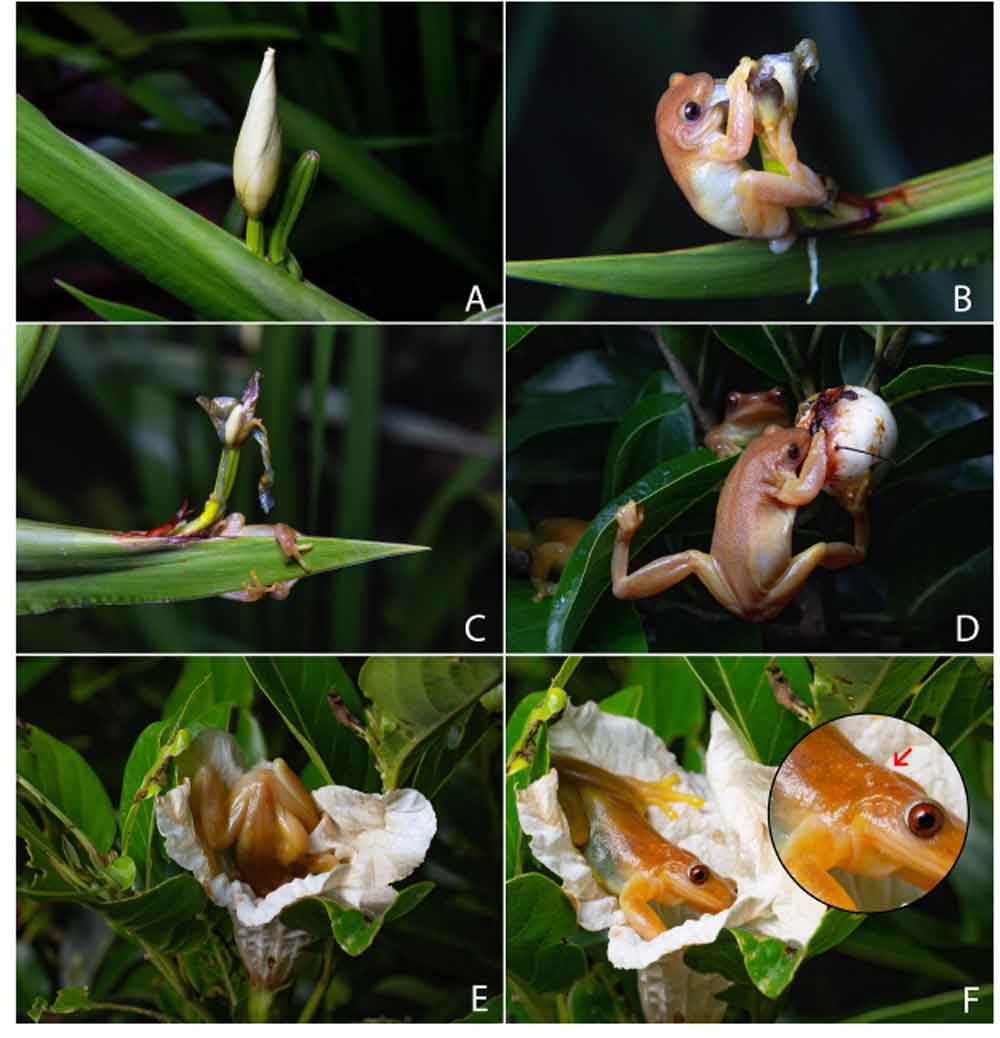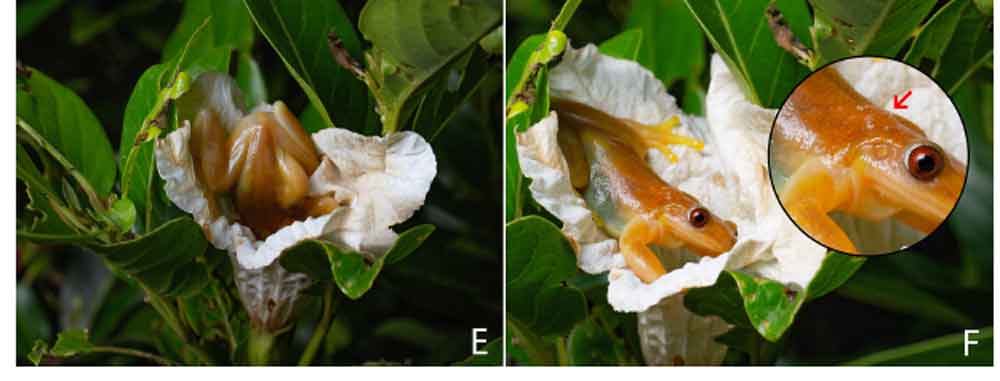This Neotropical treefrog, according to researchers, feeds mostly on the fruits of plants, plant parts, floral structures and nectar.
Frogs are usually thought of as carnivores, feeding on everything from insects to fish and reptiles, to small mammals and in the case of the American bullfrog, and perhaps some other larger frog species, small birds. But Brazilian researchers have turned this notion on its head with the little frugivorous frog scientifically named Xenohyla truncata. This Neotropical treefrog, according to researchers, feeds mostly on the fruits of plants, plant parts, floral structures and nectar. That’s right, this little guy isn’t much of a meat eater, but rather is mostly a vegan of the frog world, because it does also consume invertebrates. Another species, Euphlyctis hexadactyla (Asian dicroglossid) is also known to be a consumer of plant material.
A team of researchers led by Carlos Henrique de-Oliveira-Nogueira were on a herping expedition on the coastal plains of Brazilian Atlantic Forest when they observed Xenohyla truncata eating plant material, including flower petals and nectar using a suction-like movement. During the expedition, the researchers made in situ observations of Xenohyla truncata breeding populations and watched these frogs consume plant material from the native Brazilian milk fruit tree Cordia taguahyensis and an invasive, bearded iris (Iris x germanica).

Fig. 1. Iris x germanica flower (A). Xenohyla truncata eating an Iris x germanica flower (B) and its remains after consumption by the frog (C). X. truncata nibbling a Cordia taguahyensis fruit (D). X. truncata within a Cordia taguahyensis flower (E), and coming out of it with pollen grains (red arrow) on the back (F). Photographs by C. H. de-Oliveira-Nogueira.
The researchers observed one frog jump on a bearded iris and proceed to eat it with a suction like motion. the frog stayed on the flower for 15 minutes, then released what was left of the flower. Another observation saw a trio of frogs clustered around a ripe fruit on the Brazilian milk fruit tree. The frogs essentially brushed each other trying to get to the fruit until two frogs backed a way and the third frog began eating the fruit through a preexisting hole. This individual dined on the fruit alone for about 10 minutes, the researchers say, then the two other frogs began to nibble on the fruit as well. A third observation saw a frog climb a branch and then it went inside an open flower. It stayed in the flower for five minutes and the researchers observed the suction like movements the frogs make when they are feeding. When it left the frog, pollen grains adhered to its back, suggesting this species is also a pollinator, in addition to a seed disperser.
“The frog fed on different plant parts, consuming fruits, floral structures and nectar with suction-like movements, and we observed pollen grains adhered to the frog’s back, which renders this treefrog as a potential pollinator, besides its already established role as seed disperser,” the researchers wrote in their paper.
An abstract of the paper, “Between fruits, flowers and nectar: The extraordinary diet of the frog Xenohyla truncata” can be read on the ScienceDirect website.



